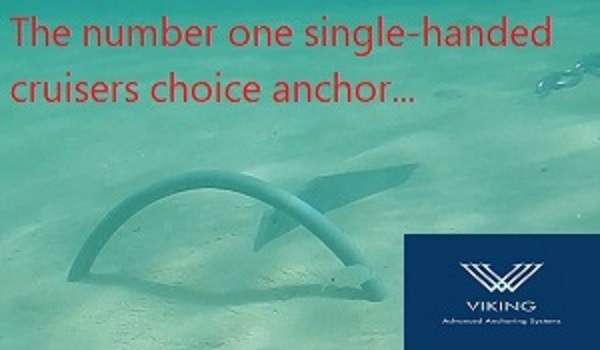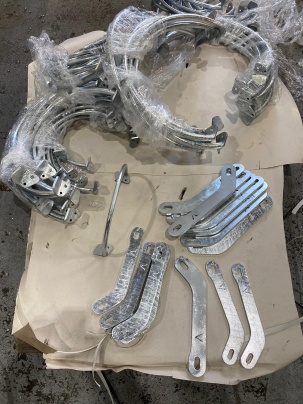
Viking anchors
About Us
So why do Viking anchors stand out of the crowd having the best performance in most seabeds?
Virtually all anchor design is evolutionary, building on previous designs. we are no different. What we have done is look at previous designs and correct ignorance, and a lack of understanding and introduced for the first time, high tensile steel that is used also in the fluke allowing of using thinner steel plates resulting a significant weight saving.
Viking is a fluke anchor, like a Danforth or Bugel. It has no extra weight in the toe. All successful unweighted fluke anchors have the crown (the junction of the shank and fluke) at the rear of the fluke. If you look at Fortress, Bugel, Bruce, and Knox - the crown is at the rear. Our original design had the crown further forward. looking at research papers from the leading Universities in anchor design and after making a lot of prototypes and testing, we moved the crown toward the heel. Moving the crown altered the location of the center of gravity and allowed the fluke to develop a 26-degree seabed fluke angle. 30 degrees is the optimum angle in the sand but we have sacrificed some seabed fluke angle to allow the fluke to perform successfully in hard seabeds. We were able to sacrifice some ‘potential’ hold because our use of a thin fluke gave us more hold/kg of anchor weight - and hold beyond what we thought was necessary. Our compromise still gives us hold superior to other similar anchors on the market.
The lower the seabed fluke angle the lower the hold. An anchor that ‘looks’ like the Viking has a seabed fluke angle of 16 degrees and an anchor of equivalent fluke size with that 16-degree angle has about 50% the hold of a Viking. Advantageously Viking is lighter - because the fluke is thinner.
As far as we can ascertain from testing the Viking will outperform any steel anchor of the same weight.
Viking illustrates the excellence that can be achieved by careful selection of the steels needed married to a well-researched design honed by months of testing in the seabed.
Now you know.
Our values
Weight-our anchors have the highest weight/holding power ratio for any steel anchors. Our use of 21st Century steels offers us weight savings without sacrificing strength and if you look critically at our anchor to vessel weight recommendations you will see how light your anchor can be. Check our usage tables here to find how light your anchor can be for your size of boat, no windlass no worry.
Initial setting - our anchors will set quickly, within a shank length, in the most challenging bottoms – hard-packed clay/mud and grassy/weedy areas. Even packed gravel.
Holding - our anchors offer the best holding power you can find relative to their size and weight, meaning that you can use a lighter anchor to achieve the hold of the ‘so-called’ new-gen anchors.
Resetting - our anchors stay set or reset immediately with a new puling direction in case of wind or current change.
Retrieval - Viking anchors are easy to retrieve due to their lightweight and can be maneuvered easily even when if they are stuck under your neighbor's anchor chain.
Easy to store when not in use- taking apart the Viking anchor will take you 5 minutes and when stowed away, the anchor will take minimal storage space.
Our anchors will always come up to the bow roller in the right direction.










